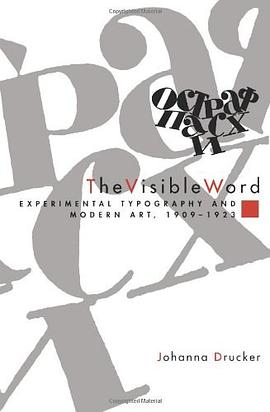

具体描述
Early in this century, Futurist and Dada artists developed brilliantly innovative uses of typography that blurred the boundaries between visual art and literature. In this text, Johanna Drucker shows how later art criticism has distorted our understanding of such works. She argues that Futurist, Dadaist, and Cubist artists emphasized materiality as the heart of their experimental approach to both visual and poetic forms of representation; by mid-century, however, the tenets of New Criticism and High Modernism had polarized the visual and the literary. Drucker suggests a methodology closer to the actual practices of the early avant-garde artists, based on a re-reading of their critical and theoretical writings. After reviewing theories of signification, the production of meaning, and materiality, she analyzes the work of four poets active in the typographic experimentation of the 1910s and 1920s: Ilia Zdanevich, Filippo Marinetti, Guillaume Apollinaire, and Tristan Tzara.
作者简介
目录信息
读后感
评分
评分
评分
评分
用户评价
相关图书
本站所有内容均为互联网搜索引擎提供的公开搜索信息,本站不存储任何数据与内容,任何内容与数据均与本站无关,如有需要请联系相关搜索引擎包括但不限于百度,google,bing,sogou 等
© 2026 book.wenda123.org All Rights Reserved. 图书目录大全 版权所有




















